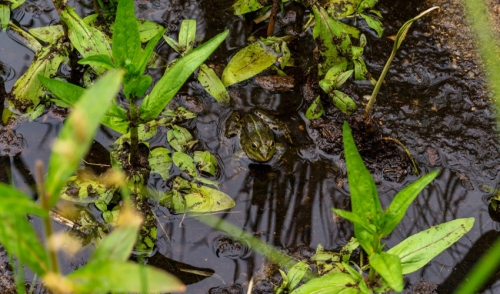
Best Pond Soil Types
An earth-bottom pond can be a great addition to your property, whether you want to provide a natural water source for livestock or wildlife, cultivate your own private fishing hole or use a pond to improve landscape drainage. But why does soil type matter when you dig a pond, and what soil types are best for pond construction?
Why Soil Matters for Ponds
The type of soil in your pond will directly affect its vitality. The soil where a pond is positioned will control the water retention and drainage, as well as the water’s overall color and clarity. The composition of the surrounding soil will also impact the water’s acidity, which is a significant factor if there will be fish or vegetation cultivated in the pond. By understanding how soil can affect the pond, you can choose the best type of soil for your pond’s placement or take steps to improve the soil in the desired location so you can craft the perfect pond for your plans.
Best Soils for Your Pond
There are three basic types of soil – sand, silt and clay. Each one has different properties that affect how a pond will perform. Every soil is composed of these basic types, and the proportions of silt, sand and clay will determine just how suitable your soil is for a new pond.
- Sandy Soils
These soils have large, loose particles. This leads to rapid drainage, and very sandy soils will have great difficulty retaining enough water for a pond. Because sand settles more quickly, however, it will drift to the bottom of a pond very rapidly, keeping the water much clearer.
- Silty Soils
Silty soils have medium-sized particles and retain water much better than sandy soils. When these soils are saturated with water, however, they move and flow more easily, increasing erosion and causing greater buildup on the bottom of a pond or breakdown of the pond’s edges.
- Clayey Soils
Clay is composed of very fine, densely packed particles, and it compacts well to hold water without losing large volumes to drainage. Because these particles are so small, however, they stay suspended in water much longer, leading to darker or murkier water.
In addition to these basic soil types, there are other soil components that can affect a pond. Large amounts of organic material such as grass clippings, thatch or leaf debris, for example, will decrease the compaction of any soil type and make it more difficult to hold water. Over time, the organic material will continue to break down, causing shifts in the soil that can lead to more leaks and lost water from a pond. Similarly, rocky soils have difficulty compacting, and if there are large rocks throughout the soil, it can be more difficult to dig a pond or may cause damage to excavation equipment.
If Your Soil Isn’t Perfect
Ideally, the best soil for an earth-bottomed pond will have at least 30 percent clay to provide the proper density and compaction to retain water most easily but still support healthy water that allows enough sunlight into the depths to nurture aquatic plants. If a handful of freshly-dug soil can be molded into a thin snake-like roll without falling apart, it most likely has enough clay to create an attractive pond. Local agricultural extension offices, nurseries and landscaping centers can often provide a soil composition analysis to determine the precise makeup of the soil if more details are needed.
If your soil isn’t quite pond-quality, you don’t have to give up on the idea of a backyard pond. Choosing a different location can make a significant difference in soil type, even in a small area, so consider testing soil in several spots before planning where to dig for a pond. If the soil is too densely packed with clay for a healthier, clear-water pond, it can easily be amended to improve the soil structure without losing the ability to dig a pond. If the soil is too sandy, clay can be imported to the area, or sodium bentonite – a natural sealant that expands when wet to fill in porous soils – can be mixed in to improve compaction for the pond’s structure.
By understanding soil types and how they can impact an earth-bottom pond, you can easily plan to dig a pond in the proper soil for a healthy aquatic ecosystem and a pond you’ll enjoy for years.


